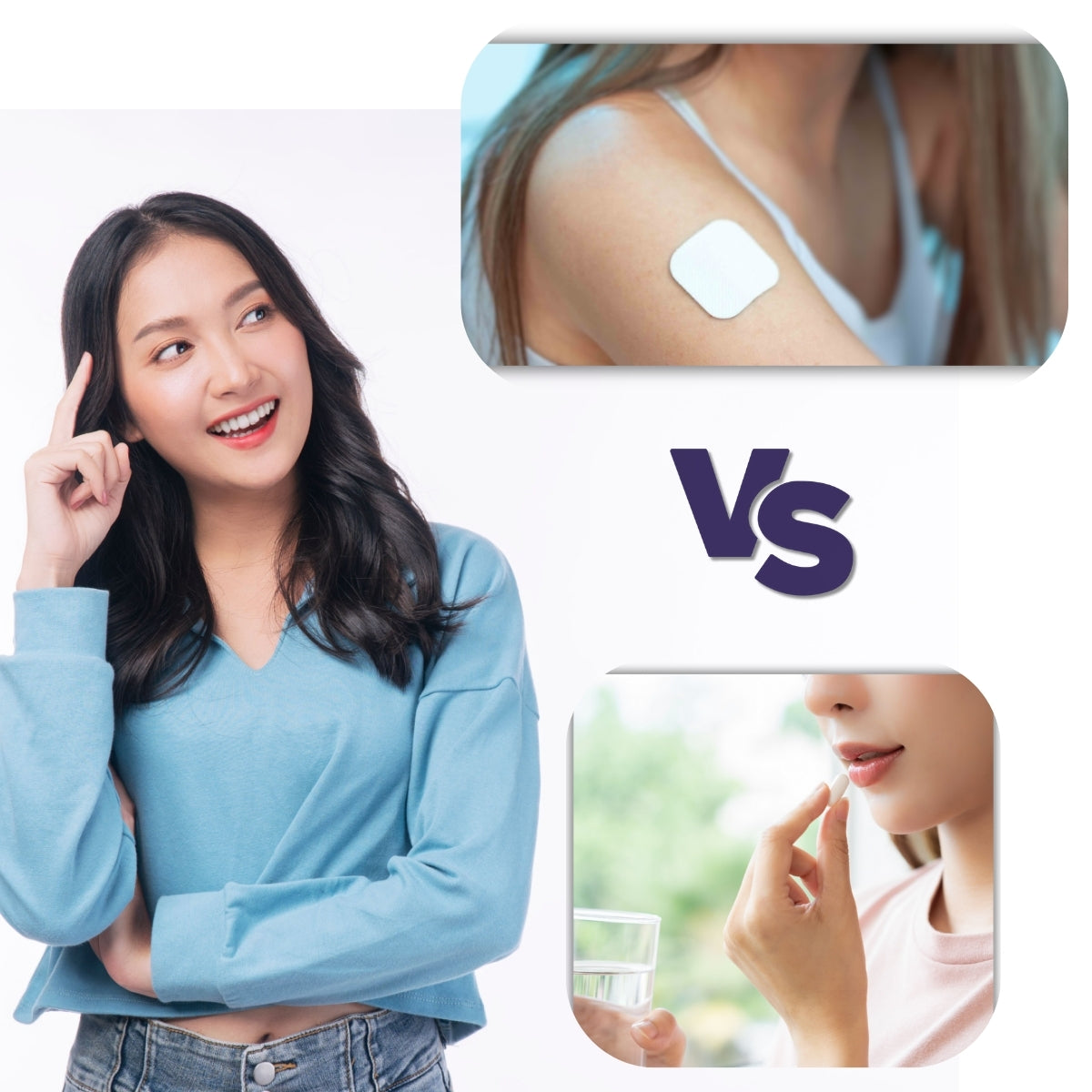Vitamins are essential for maintaining overall health, and there are different ways to take them. Oral vitamins have been popular for many years, but transdermal or vitamin patches have been gaining attention lately. This article provides an in-depth comparison between these two methods of vitamin supplementation.
What are Transdermal Vitamins?
Transdermal vitamins are a form of vitamin intake through the skin using a topical patch. By applying a patch to your skin, you can receive vitamins and minerals without swallowing capsules, chewable tablets, liquids, or gummies. PatchAid Vitamin Patches are an example of this, with active ingredients suspended in a matrix.
How Transdermal Vitamins Work vs. Oral Supplements
When you consume an oral supplement, the nutrients enter your digestive tract, just like they do when you eat food. On the other hand, when you use a topical patch, the nutrients in the patch become activated upon contact with your skin and directly enter your bloodstream.
Taking Transdermal Vitamins Compared to Oral Supplements
Oral supplements can be inconvenient, especially when swallowing large capsules or consuming liquids and chewable vitamins with unpleasant tastes. On the other hand, using vitamin patches is simple: apply a patch to your skin, remove it 8 hours later, and discard it. No swallowing or unpleasant tastes involved.
Effectiveness of Transdermal Vitamins vs. Oral Supplements
Although oral supplements have been around for a long time, their actual absorption rates may not be as high as believed. The presence of multiple nutrients in a vitamin pill may further reduce absorption rates. In contrast, Vitamin D3 Patches by PatchAid are designed to increase absorption because nutrients do not compete for absorption in the digestive tract.
A peer-reviewed study on the effectiveness of vitamin D topical patches concluded that they have the potential to maintain healthy vitamin D levels in high-risk individuals. Research is ongoing, but transdermal vitamins are becoming more mainstream due to their ease of use, lack of gastrointestinal side effects, and non-interference in absorption.
Final Thoughts
It is essential to note that the Food and Drug Administration has not evaluated these statements. PatchAid patches are not intended to diagnose, treat, cure, or prevent any disease. As with any supplementation, individuals with medical conditions should consult a licensed medical practitioner before using vitamin patches. Results may vary from person to person.
In conclusion, transdermal vitamins offer a promising alternative to traditional oral supplements. Consider discussing with your doctor if PatchAid Vitamin Patches, such as a Vitamin D3 patch, may be right for you. Making the switch to vitamin patches could be a worthwhile change for your health routine.







